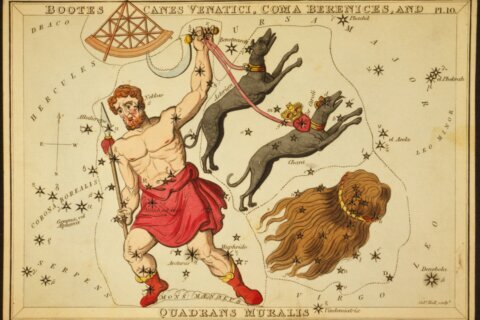If you have a workplace retirement plan, thank the 1974 Employee Retirement Income Security Act. The law set minimum standards for private industry retirement and health plans.
“It’s hard to believe it’s been 50 years since ERISA was passed,” says Deana Calvelli, vice president of wealth and retirement for NFP, a defined contribution retirement advisor. “A 401(k) is one of the best ways people can save.”
Seven in 10 private-industry workers have access to a defined contribution retirement plan such as a 401(k), according to the Bureau of Labor Statistics. However, those plans are not all created equal.
“There are so many different components to a retirement plan,” Calvelli says. “Each plan varies to meet the needs of different workers and different industries.”
If you are wondering how your 401(k) plan stacks up against those at other companies, here are some signs that your retirement benefits aren’t as competitive as they could be.
— No employer match or a small match
— Missing modern investment options
— Glut of investment fund choices
— High fund fees
— Long vesting schedule
— No Roth option
— Waiting period to join plan
No Employer Match or a Small Match
More than 60% of 401(k) plans administered by investment firm Vanguard offer immediate matching contributions, according to Vanguard’s How America Saves 2024 report. A 401(k) match is money employers deposit into a retirement account to match an employee’s contributions.
“The No. 1 reason people contribute to a workplace plan is an employee match,” according to Garrett Anderson, a retirement plan advisor with Anderson Financial in Brookeville, Maryland.
However, how much employers match can vary greatly. Vanguard says there are more than 100 distinct matching formulas among its plans. Of those, 69% use a single tier — or flat rate — for matching. For instance, the most frequently used formula by Vanguard plans is a 50% match on contributions up to 6% of a worker’s pay. That formula is used by 16% of 401(k) plans administered by Vanguard.
Meanwhile, Fidelity Investments says the most popular match among its plans is a multiple-tier formula. That formula matches 100% of contributions, equaling up to 3% of a worker’s pay and then 50% on the next 2%.
The median value of an employer’s match is 4%, according to Vanguard. If your workplace offers less than that, your retirement plan may not be as competitive as others. Some plans may not offer any match.
“No match is certainly worse than a match,” notes Todd Feder, vice president and senior retirement plan consultant at Girard, a Univest Wealth Division.
[Read: How to Maximize Your 401(k) Match.]
Missing Modern Investment Options
Within a 401(k) plan, workers can typically choose how to invest their money. However, their options are limited to funds selected by their employer.
The best 401(k) accounts have options for low-cost index funds or target-date funds. The latter are designed to include the right mix of investments based on someone’s expected retirement year. If your employer doesn’t include these in your plan, that could be a sign that your retirement account is antiquated.
A Glut of Investment Choices
It may seem counterintuitive, but having dozens of investment fund choices can be a sign of a lousy 401(k).
“That’s a red flag that they aren’t offering best-in-class investment options,” Anderson says. “The plans that have more oversight will have fewer investment options.”
A large number of investment options can mean that a plan administrator hasn’t spent much time investigating which funds will best meet the needs of employees. It can also set up participants for failure, according to Feder, since they may become overwhelmed or choose funds with high fees and poor returns.
“What’s really important is that you have a simple investment menu with pre-vetted investment options,” Calvelli says. She says one fund in each of the major investment categories is typically sufficient.
[Related:How to Save in a 401(k) and IRA in the Same Year]
High Fund Fees
When it comes to 401(k) fees, there are two layers of expenses, according to Anderson. The first are administrative expenses, which are usually passed on to employees by employers. The second are the fees charged by the funds chosen by workers.
Ideally, these fees will be less than 1%, and index funds should have basis points in the single digits, Anderson says. One hundred basis points equals 1%.
“Seventy-five to 80 basis points for an index fund is too high,” according to Feder.
If your 401(k) isn’t offering low-fee funds, then you might have a subpar retirement plan.
Long Vesting Schedule
Vesting refers to the length of time you need to work for a business before you can keep its contributions to your 401(k) plan.
“We’ve seen a lot of progress on that front,” Calvelli says. It was once common for companies to have vesting schedules that would run five years or more. Now, 60% of employers offer immediate vesting within three years, she says.
In fact, half of plans immediately vest employees for employer matching contributions, according to Vanguard’s How America Saves 2024 report. That means these workers fully own any matching contributions from the first day of their employment. The report notes that 45% of plans also immediately vest employees in other employer contributions.
On the other end of the spectrum, less-generous 401(k) plans — about 25% — use a five or six-year vesting schedule. As a result, workers there will forfeit some or all of their employer’s contributions if they leave the company before the end of that vesting period.
No Roth Option
In addition to offering antiquated investment options, some 401(k) plans may be missing modern design features such as auto-enrollment and auto-escalation of contributions. What’s more, some may not offer a popular savings option.
“I still see plans that don’t offer Roth contributions,” Anderson says.
Roth 401(k) plans are valued by workers who want to avoid taxes on retirement savings. Unlike traditional 401(k) accounts, which come with a tax deduction for contributions, Roth accounts are funded with after-tax dollars. In exchange for missing out on a deduction, money in the account grows tax-free and can be withdrawn tax-free in retirement.
Vanguard reports that 82% of plans offered Roth contributions in 2023, so if your plan does not, it is in an increasingly small minority.
[Read: 401(k) Mistakes Job Hoppers Make.]
Waiting Period to Join Plan
A 401(k) plan is a valuable employment benefit — but only if you get to use it. In 2023, about a quarter of plans did not allow employees to immediately begin making contributions to their 401(k) account, according to Vanguard. The most restrictive 7% of plans require that employees wait a year before they can begin contributing to their retirement plan.
Even if your 401(k) falls into the categories above, keep in mind that a seemingly lousy plan may still be better than your other options.
“Obviously with a 401(k), you have the opportunity to contribute significantly more than an IRA,” Feder says. Plus, they often come with a match or other employer contribution. “It would be foolish for someone to leave money on the table.”
If you are less than impressed by your retirement plan, be vocal, Anderson says. Let your company know you’d like a Roth option, different fund choices or other account features. As Anderson notes, your business may be open to making changes because no employer wants to offer a lousy 401(k).
More from U.S. News
How to Start Investing and Saving for Retirement With Little Money
Should You Draw $1K From Your Retirement Account?
7 Things to Know About Withdrawing Money From a Traditional IRA
How to Tell if You Have a Lousy 401(k) Plan originally appeared on usnews.com
Update 10/28/24: This story was previously published at an earlier date and has been updated with new information.







